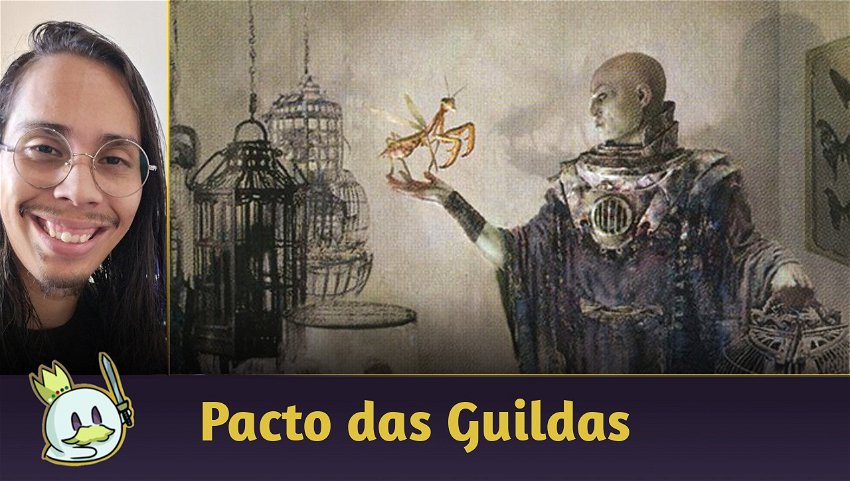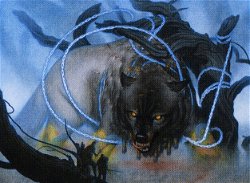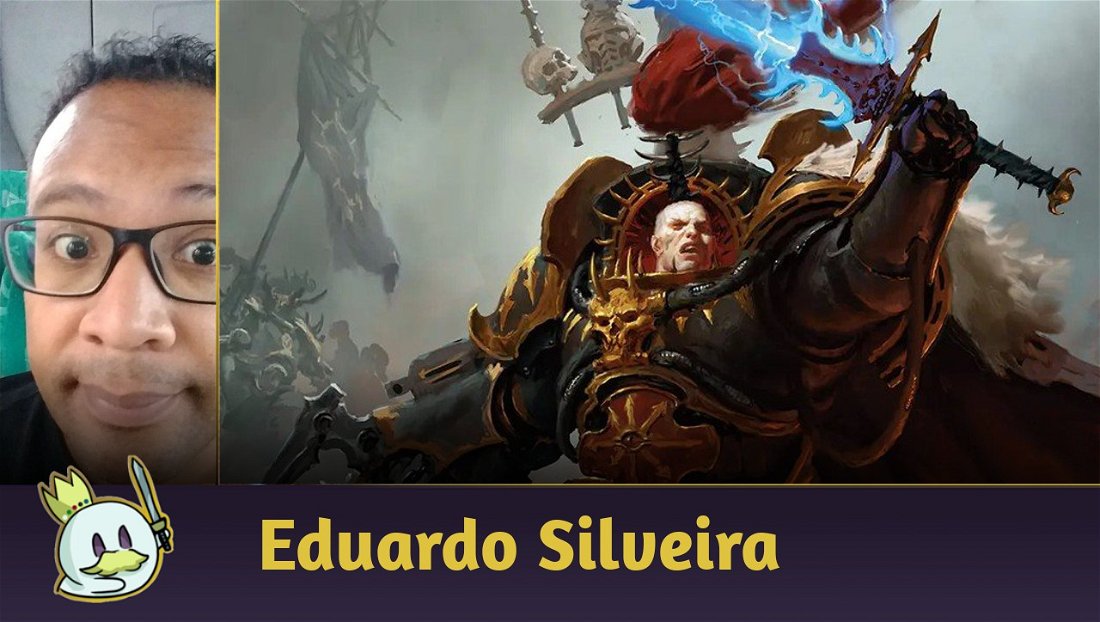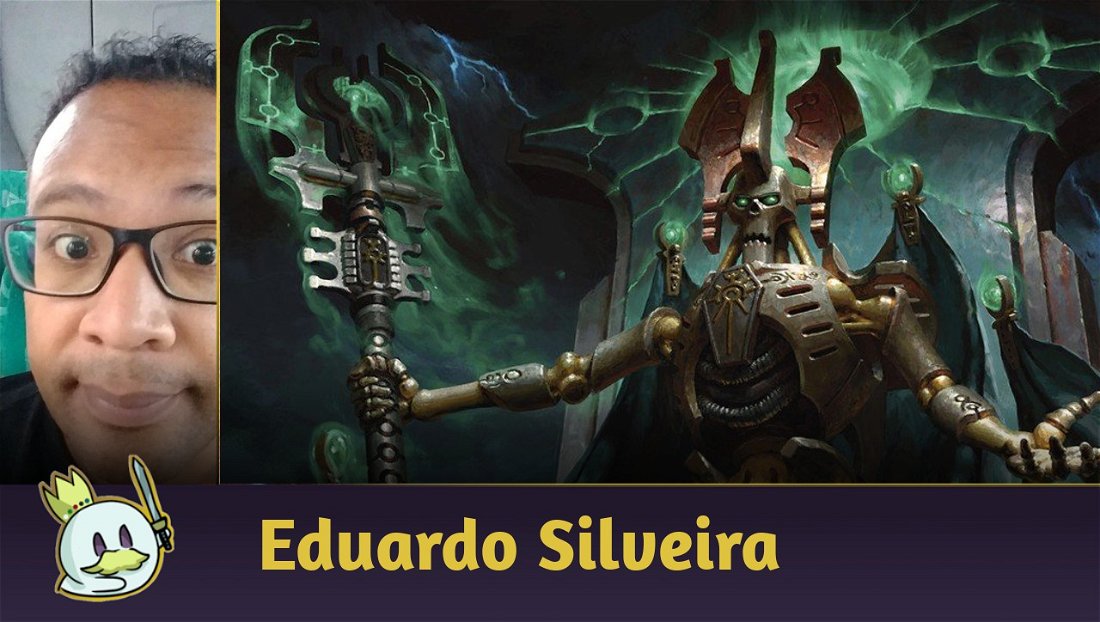Welcome to my first article for Cards Realm.
For those who don't know me, my name is Raniere Carvalho, better known in the MTG community as Pacto Das Guildas.
In my first article, I will talk about one of the best deck options for the Pauper format today, Mono Blue Faeries. I will present here the list that has guaranteed me great results in the Pauper League (including a 5-0 recently), as well as game posture and how to sideboard in the main matchups.
About Mono Blue Faeries
Mono Blue is a Tempo deck, which uses a combination of low-cost creatures that have high synergy with each other, card advantage and counterspells to stabilize the board and thus win the game quickly and effectively.

Delver of Secrets, one of the most iconic creatures in Magic history, is the star of the deck. A one drop that flies and imposes an absurd clock in the early stages of the game is certainly a threat to be reckoned with.
The deck also has the beloved (or should I say hated?) faeries. Faerie Seer can clear the top to help Delver transform or find that missing land drop to develop the game in subsequent turns, as well as being another flying one-drop and increasing the strength of another key piece, Spellstutter Sprite.

This faerie alone can counter any one mana spell, but when allied with its companions, it stops being annoying and becomes a real thorn in the opponent's side. We also have Faerie Miscreant, which can bring some card advantage, in addition to helping Stutter.
Faeries are great for their high synergy and in large numbers they can even end the game, but they also have a second function in the deck: putting Ninjas on the board for the surprise factor.
The deck has two of them, Moon-Circuit Hacker who can enter on turn 2 with a Dispel or Spell Pierce backup, and Ninja of the Deep Hours, which is the grown-up version of the first. Both have the role of creating an advantage while increasing the board, working very well with the flying creatures of the deck through Ninjutsu and allowing to reuse their ETBs.
There's also a very effective counterspells package, with Counterspell being the most important among them. We still have, in addition to the already mentioned Dispel and Spell Pierce, Force Spike, which when well-placed is extremely useful as it can counter anything if the opponent isn't cautious enough.
For interaction, we have Snap, a “removal” that, despite not seeming that effective, should still be respected, as it is versatile and can solve several complicated situations. Bounce a Stutter to counter the opponent again is an incredible move. There's also Mutagenic Growth, which can be used to remove a strong blocker, protect a creature, or even deal that extra damage to reach lethal.
We also have Of One Mind, another card advantage source that will give us two draws for 1 mana in most situations, keeping the gas running.
Mulligan and Postures
A good starting hand should have two land drops. Keeping a single island hand can be dangerous (depending on the matchup, if you already know what you're up against, it can be advantageous). Faerie Seer + Stutter + Delver is an excellent combination at first, even better if they are accompanied by a ninja, preferably Moon-Circuit.

You can also opt for a more reactive hand with Faerie Miscreant, which will give you some draws, and counterspells to keep the game under control, but keep in mind that fairies work much better alongside a ninja.
This deck can mulligan relatively well, but not playing cantrips can punish you at times, so consider that when to keep or not. Don't think that a handful of Delvers is a guarantee of victory, quite the opposite. Delver needs to flip before he can do his job, and if you flood or have no land drops, you could end up giving your opponent the upper hand and putting yourself in an irreversible situation.
Sideboard
Here I will address three matches against the main decks of the format, focusing on the sideboard and talking about the 15 cards that I didn't mention at the beginning.

The Sideboard is made up of some removals that are necessary when the opponent has threats that a Snap cannot effectively deal with. Bind the Monster can disable a wide variety of threats from the format, but it will mainly serve to deal with a Gurmag Angler or Tolarian Terror (there are other cards that have the same effect, choose according to your taste).

Gut Shot will mainly serve on mirrors, to deal with faeries, or remove some annoying blocker like Squadron Hawk that have seen a lot of play lately. Curfew is an almost mandatory card in Mono Blue, since it's the only way the deck has to deal with a Guardian of the Guildpact or a Slippery Bogle without having to count with a Counterspell.

The side also has another counterspells package, these more situational, but well positioned for the Metagame.
Annul will serve to deal with auras and enchantments present in the format, as well as dealing with certain Affinity artifacts.
And finally, we have Blue Elemental Blast, the ultimate card against red decks, and with so many of them present in the format this slot is mandatory (and I have no problem using one or two more copies of Hydroblast depending on the need and where the metagame is at the moment).
Sideboard Guide
Vs. Bogles
In this matchup, the opponent will play their creatures early and in two or three turns transform them into gigantic threats that are impossible to fight. In game 1 you can follow two lines:
- Counter their creatures;
- Counter the most important auras.
Plan A will only work if you're on the play and the opponent doesn't make a creature on turn 1. You'll need Stutters and Counterspells to make this work. Normally, the Bogles player doesn't want to have too many creatures in their starting hand (one or two at most). If you manage to deprive them of creatures while imposing a clock and drawing cards, victory is guaranteed quickly.
Plan B is the one that occurs the most, as it's quite difficult to counter a creature on turn 1 (except with a miraculous Force Spike). You will need creatures to trade with the opponent's creatures while preventing the main auras (Ancestral Mask, Armadillo Cloak and Ethereal Armor) from hitting the board. Ignore everything else and focus your efforts on preventing these auras from resolving, any one of them could leave the game with no way out for you.
On the post-side we will have Annul and Curfew to help with that plan.
Overall, this matchup tends to be pretty tough. Wisdom is needed when keeping the starting hand and playing well defensively, as the slightest mistake can be fatal.
IN

OUT

Vs. UWx Gates
This is another delicate matchup, as we are dealing with a deck that can both counter our spells and attack us and stop our game with efficient removals. There are a few variations of this deck, but they all have one thing in common: a mana base cadenced for the first few turns. This is something we can and should explore, but always with caution and a plan in mind.
It's important to get rid of the flying blocks before there are enough gates to do any damage and don't forget about Guardian of the Guildpact! This creature has the potential to end the game on its own.
Post-side, we can count on Gut Shot to take care of the 1/1 and Curfew that can take the Guardian off the board, to be countered later with a Counterspell.
IN

OUT

Vs. Mono Red Burn
This is generally a more favorable matchup for Mono Blue, due to the large amount of counterspells, and the post-side tends to be even better. Our strategy is to deal with the opponent until they run out of gas, then we end the game by establishing our card advantage with Ninjas.
IN

OUT

Vs. Izzet Faeries
Here we are dealing with a “mirror”. Apart from the red part and the Delvers, the Izzet tries a similar approach to the Mono Blue, but it has more effective removals and its side has the powerful Pyroblast and/or Red Elemental Blast.
In this matchup, we need to fit Ninja early (with some backup counterspells as usual) and prevent the opponent from doing theirs. Watch out for Electrickery and Fiery Cannonade.
IN

OUT

Vs. Affinity
And finally, the big villain of the format.
This matchup is extremely difficult, especially on game 1. Galvanic Blast can kill any of our creatures even without Metalcraft. The opponent's creatures are all troublesome, and they fill the board quickly, but the worst card we can face is Makeshift Munitions: this enchantment destroys our game.
Affinity has slow starts and manages to impose threats around the 3rd or 4th turn, but as it goes down its two turns the opponent will draw many, MANY cards. The strategy here is to impose a massive clock with Delver (two Delvers in a row flipped on turn 3 can do a lot of damage or even win the game) or try to stabilize the board and beat the opponent in card advantage. Game 2 and 3 are facilitated by Blue Elemental Blast and Annul.
IN

OUT

Conclusion
Mono Blue Delver is an extremely fast and versatile deck, being able to take a more Aggro or more Control approach depending on the need, but it is a deck that requires caution and calm: you don't need to finish the game quickly, you need to find the best way to win.
I like to keep in mind that a game of Magic: the Gathering is decided from the starting hand, it helps me think about how I can achieve victory with these 7 cards. Keep this in mind, be a strategist, think carefully before taking each step and be thorough in your decisions. You want to destabilize your opponent, make them think twice and be reckless because that's how you're going to run the game the way you want.
This deck is a great option for those who would like to get into the format and like more grindy games, where you build victory play by play, it is relatively accessible (both tabletop and digital) and if you master it, you will surely achieve great results.
I hope you enjoyed my first article and I promise to bring you more content here. If you have questions or want to share ideas about the deck, I'll be attentive to answer all comments.
Until next time!















— Comments 0
, Reactions 1
Be the first to comment